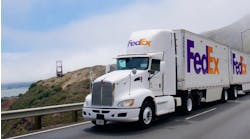On December 14, 2018, the IRS released the 2019 optional standard mileage rates for the use of a car, van, pickups or panel trucks: 58 cents per mile driven for business use, which is a three and a half cent increase from the 2018 rate.
According to Motus, the company that analyzed and submitted the mileage data to the IRS, The Fair Labor Standards Act (FLSA) requires employers to pay their employees minimum wage, and many states have additional employee-protection laws that require employers to provide reimbursement for all business-related expenses.
Giving inaccurate reimbursement to employees can have serious consequences. In 2006, Pizza Hut paid $5.1 million in a class action settlement in the state of California. In 2008, Starbucks paid $3 million in a mileage reimbursement lawsuit. In 2010, RadioShack paid $4.5 million with $1.5 million in fees, and $5,000 to each lead plaintiff.
While the IRS rate is an optional reimbursement program for businesses, Ken Robinson, market research analyst at Motus, shed light on different reimbursement programs that can work effectively for a multitude of companies, stating that employees' amount of business mileage is the biggest factor, which is why IRS rate is not mandated.
One program Motus suggests, using the IRS optional standard rate, is recommended for drivers who are on the road 5,000 miles or less every year.
“One advantage of using the rate is that as long as employees are reimbursed at that rate, and there is proper documentation, the reimbursements can be tax free. At the same time, there are other options to reimburse based on geography and other factors,” said Robinson.
There are a variety of factors that can contribute to the amount of necessary driver reimbursement, such as gas prices, insurance premiums, etc. based on geographical location, so companies may choose different methods of paying back its employees.
However, mid to high mileage workers can make reimbursement expensive, which is where the second method, FAVR (Fixed and Variable Rate) comes into play.
“Motus likes to help employers use more sophisticated reimbursement programs, like FAVR who have employees that drive more than 5,000 miles,” Robinson said. “This type of program helps compensation be fair for all employees. If you’re a delivery worker driving 20,000 miles, your reimbursement is going to be different from a pharma sales rep using a personal vehicle that’s partially used for entertaining clients.”
A way to create and manage the business mileage log is using the Motus Mileage Tracking app. The core of Motus’ offering – a frictionless mobile tracking platform that tracks proper reimbursement – allows companies to use this platform to manage individual mileage entry as well as FAVR programs.
The most important aspect to recognize about creating a driver reimbursement program is that each company can have a customizable program based on each company’s needs. Whether it’s a company with delivery aspects such as Pizza Hut or Starbucks, or a company focused on transporting goods, like Walmart, each company can have its own personalized tracking log.
“A company may have low mileage mobile workers, and they might be using IRS standard, but they might have a group of employees that are driving more, and they could be using FAVR for them,” Robinson added. “A company with larger sales territories may have a different FAVR program, or the company provides their own company vehicles to its employees and then charges the employee for the personal use.”
According to Robinson, the Motus app makes logging mileage very easy for the employees as well as the employer. The creation of the mileage log can be fully automatic with only a few steps before the driver reviews and submits his or her information – record keeping and administrative overhead can be used all in one place.
“The Motus platform makes mileage reimbursement very easy for employers, whether they use the IRS standard or a custom reimbursement. We make mileage tracking very efficient for mobile workers also - so it’s a win for everyone," he added.
Robinson recommended that if an employer needs to prove documentation to the IRS that a claim should be tax free, the administrator just needs to log into the Motus app, and everything is already there.
“It’s a good example of how using technology makes everything better,” Robinson said. “There are a lot of people out there tracking mileage on spreadsheets on paper, and nowadays they don’t have to do that in terms of documentation.”
![Motus platform_2[1].png Motus platform_2[1].png](https://img.fleetowner.com/files/base/ebm/fleetowner/image/2019/06/fleetowner_37145_motus_platform_21.png?auto=format,compress&fit=crop&q=45&h=139&height=139&w=250&width=250)



